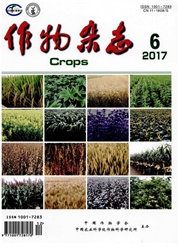

 中文摘要:
中文摘要:
本文通过对2个抗胞囊线虫大豆品种(灰皮支黑豆和五寨黑豆)和2个感胞囊线虫大豆品种(中黄13和中黄35)接种胞囊线虫4号小种(SCN4)后的异黄酮含量变化分析,初步探索异黄酮在大豆对胞囊线虫抗性中的作用。结果表明,4个抗感大豆品种接种SCN4后根部异黄酮含量均诱导增加,但诱导增加程度不同,除灰皮支黑豆外,其他3个品种的异黄酮含量相比对照均显著升高。两个抗病品种的异黄酮诱导模式也不同,表明大豆对胞囊线虫的抗性可能存在多种机制,异黄酮可能参与其中的部分抗性机制。
 英文摘要:
英文摘要:
To explore the role of isoflavones in resistance of soybean to soybean cyst nematode( Heterodera glycines,SCN),2 resistant cultivars( Huipizhiheidou and Wuzaiheidou) and 2 susceptive cultivars( Zhonghuang 13 and Zhonghuang 35) were inoculated with cyst nematode race 4( SCN4). Their isoflavones in roots at 38 d after inoculation were measured by HPLC. Results showed that isoflavone contents increased after SCN infection in all soybean varieties,but the induction patterns varied,especially in two resistant soybean varieties. It indicated that the mechanism of resistance to soybean cyst nematode might have multiple models,and isoflavone could be involved in some of these resistance mechanisms.
 同期刊论文项目
同期刊论文项目
 同项目期刊论文
同项目期刊论文
 期刊信息
期刊信息
